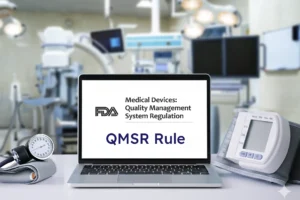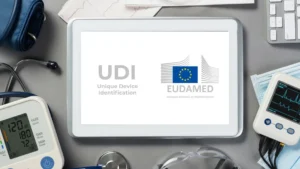Under the EU Medical Device Regulation (MDR) (EU) 2017/745 and In Vitro Diagnostic Regulation (IVDR) (EU) 2017/746, compliance responsibilities are distributed across various economic operators namely manufacturers, importers, distributors, and authorised representatives. They carry clearly defined obligations throughout the device’s lifecycle, particularly during the post-market phase.
Each actor is expected to maintain documentation, register devices appropriately, report incidents, and keep safety and performance information current. This regulatory shift was designed to ensure safer medical devices and greater accountability among those responsible for their development, distribution, and oversight across the EU.
In practice, however, it has created a new set of challenges: compliance gaps caused by fragmented communication, scattered documents, and a lack of shared systems between economic operators.
The Trouble with Working in Silos
Traditionally, medical device documentation has been stored across local drives, email threads, siloed folders, and custom-built internal systems. Regulatory updates or corrective actions often require manually tracking changes through multiple hands, sometimes across countries and time zones. A single version of a PMS report may exist in several forms, none of which are officially traceable. UDI entries and EUDAMED updates can be duplicated, delayed, or missed entirely.
This traditional mode of coordination, or lack thereof, is where most compliance gaps are born. Especially in the post-market phase, the need for active and systematic tracking of safety, performance, and vigilance data outlined under MDR Chapter VII, Article 83 requires seamless collaboration. Without it, errors go unnoticed, timelines slip, and compliance becomes increasingly reactive instead of preventative.
What Can Go Wrong
When economic operators do not coordinate effectively, several critical issues can arise:
- Missed or Duplicate Submissions – EUDAMED updates and authority notifications often get delayed or submitted twice due to poor coordination.
- No Audit Trail – Audit trails become unclear or non-existent, making it difficult to demonstrate compliance during inspections.
- Fragmented Post-Market Data – Important safety or performance data doesn’t always reach the right person, like the PRRC, on time.
- Outdated or Conflicting Files – Multiple versions of documents cause confusion and increase the risk of non-compliance.
- Barriers to Market Access – Market access can be compromised, with devices blocked or recalled due to documentation gaps.
These are not theoretical risks. In a compliance environment where accountability is shared, one EO’s failure to maintain proper documentation can expose the entire supply chain to legal, financial, and reputational liabilities.
Why This Matters in the Post-Market Phase
The post-market phase of a medical device demands continuous monitoring, data gathering, and proactive decision-making. Under MDR and IVDR, economic operators must not only act quickly when something goes wrong but also show regulators that they have the processes in place to detect it in the first place.
This is where uncoordinated systems fall short. Without a unified mechanism to manage documentation, approve changes, and ensure all EOs are operating from the same source of truth, the risk of gaps multiplies.
Bridging the Gap with MDIS – A Unified Compliance Platform
This industry-wide pain point has prompted the development of smarter, more integrated solutions. MedQAIR’s Medical Device Information System (MDIS) is one such solution designed to bridge the compliance gap by uniting all economic operators on a single, structured platform. MDIS is essentially a centralized hub where manufacturers, authorised reps, importers, and distributors can collaborate in real time on compliance tasks and share up-to-date device information. It provides a secure, role-based system (compliant with ISO/IEC 27001) for managing all device data in one place
MDIS brings structure and standardisation to the post-market compliance workflow:
- Centralised document control ensures every stakeholder accesses the same, up-to-date version of a file.
- Automated EUDAMED integration reduces manual errors and delays in regulatory submissions.
- End-to-end traceability allows manufacturers, importers, and ARs to track every update, approval, and linked action across a device’s lifecycle.
- Audit readiness is built-in, with version histories, metadata, and linked documentation available at a moment’s notice.
By design, MDIS makes it easier for all economic operators to meet their legal responsibilities proactively and collaboratively. The platform is also scalable, supporting multiple products and partners as a business grows, which is crucial in an increasingly complex regulatory landscape.
Read this insightful blog to know more about how MDIS helps in tackling the post-market complexities smoothly.
Conclusion and Next Steps
In an era of heightened regulatory scrutiny, the cost of poor coordination can be tremendous. The compliance gap isn’t just a theoretical problem. It’s felt daily by QA/RA professionals and industry stakeholders struggling with disjointed tools and processes. Smarter systems like MDIS offer a path forward by bringing all players onto the same page. They transform compliance from a fragmented, error-prone chore into a more efficient, proactive process.
If your organization is facing these coordination challenges, it may be time to consider a unified approach. Request a demo of the MDIS platform to discover how it can streamline your post-market compliance and give you confidence that every partner is pulling in the same direction.




